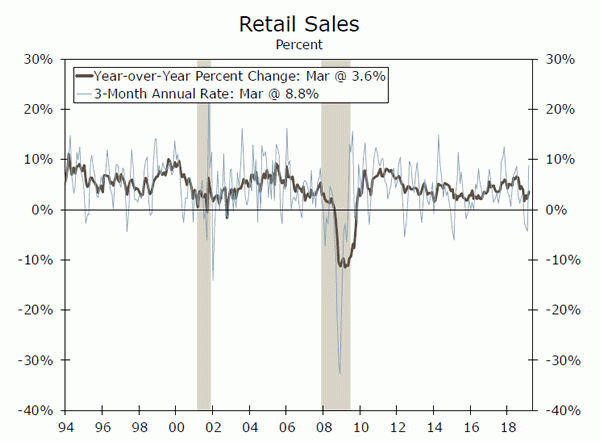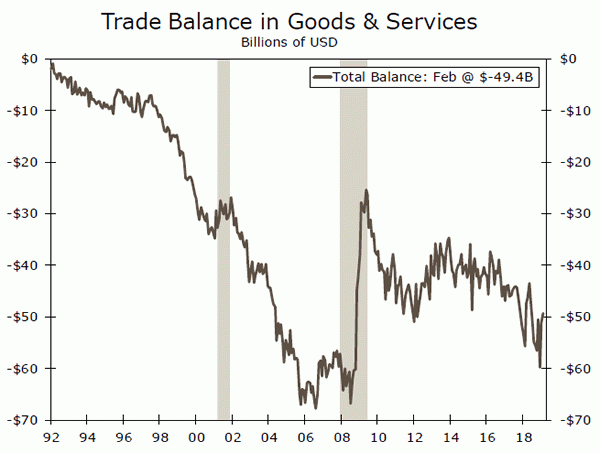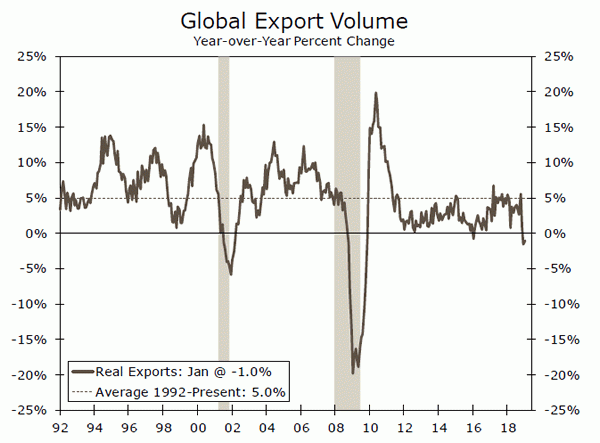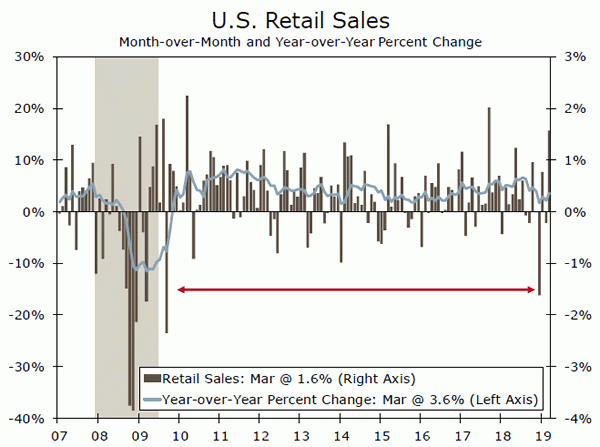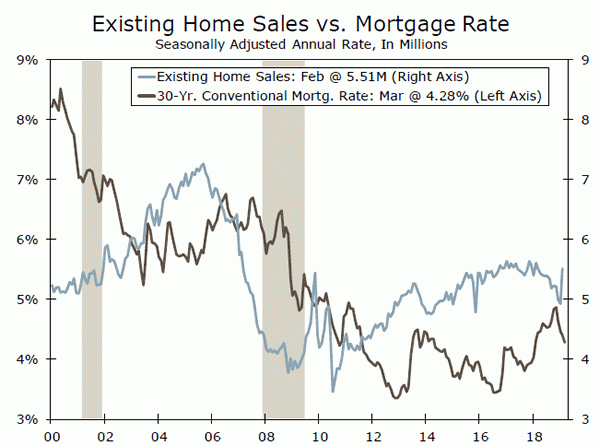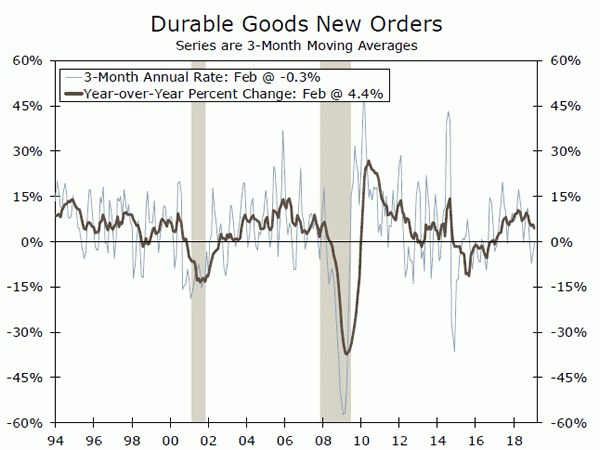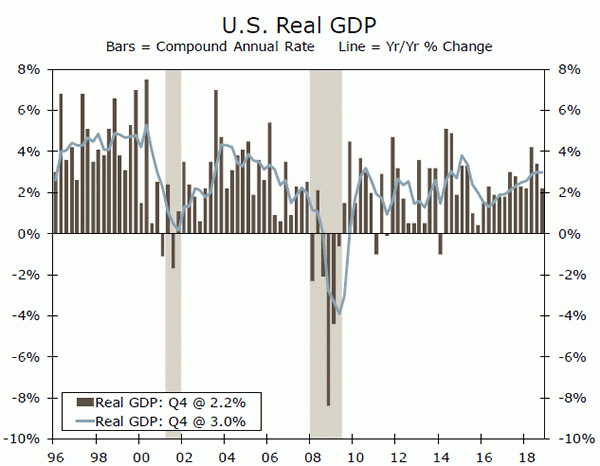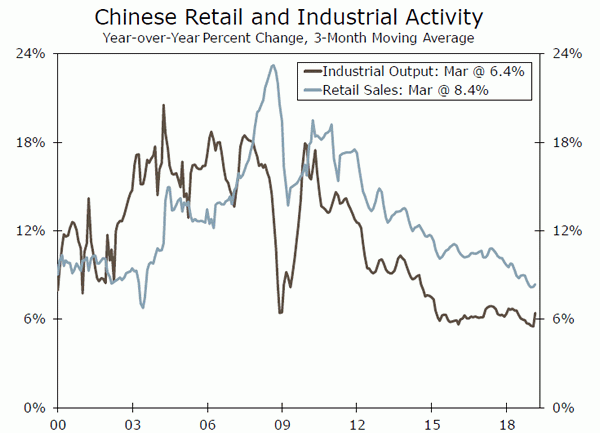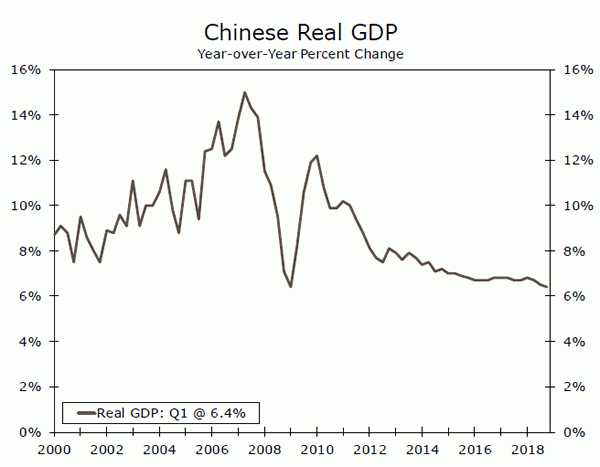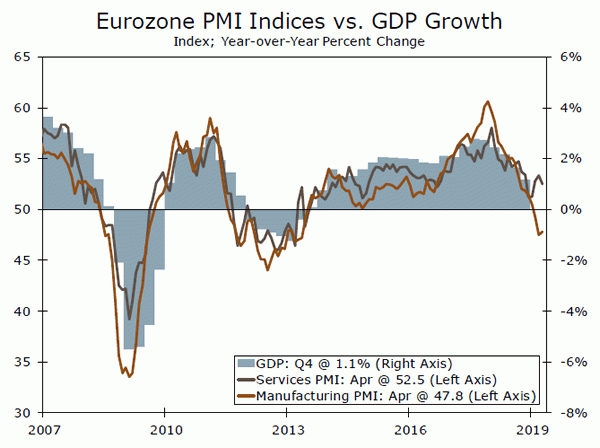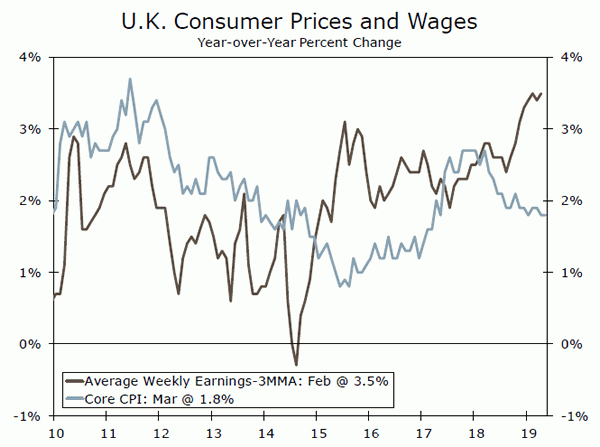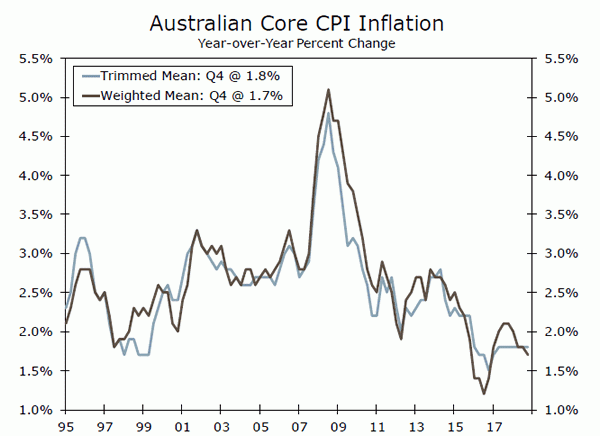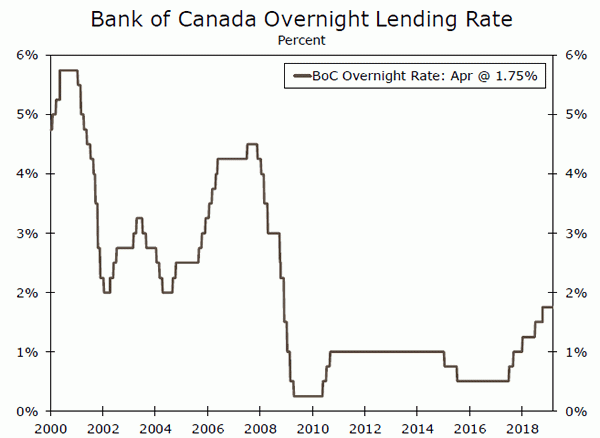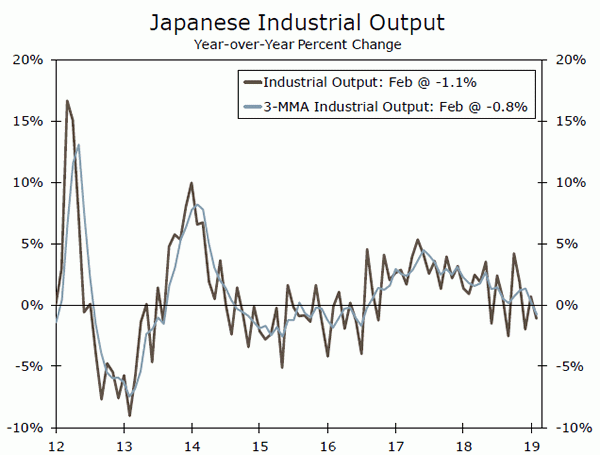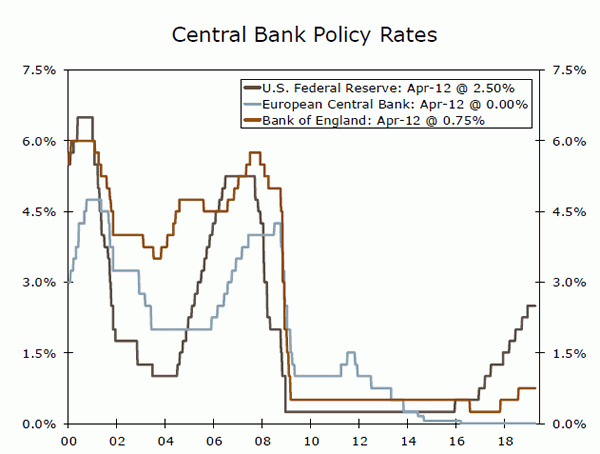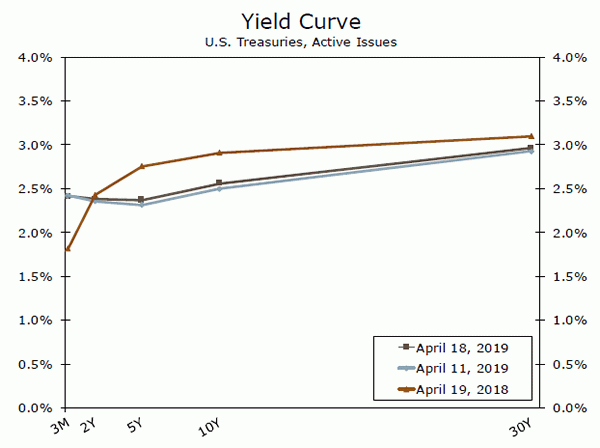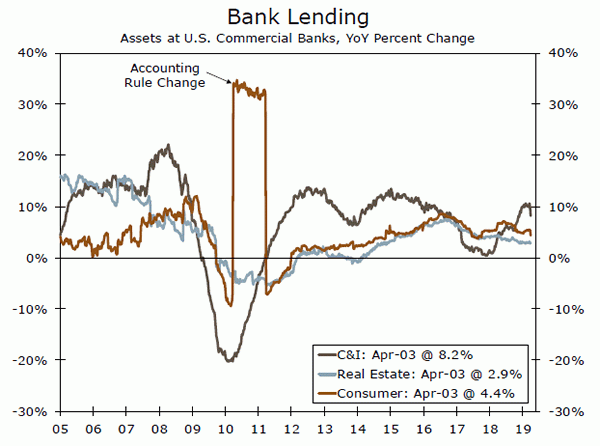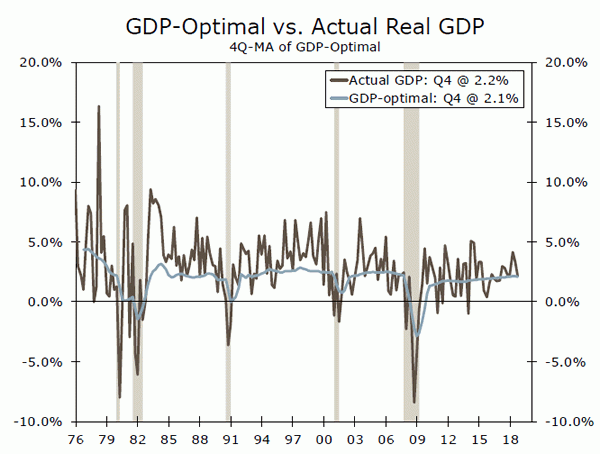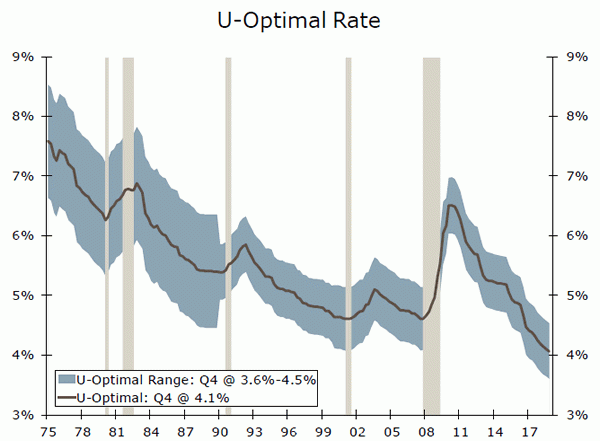U.S. Review
Outlook for Q1 GDP Is Brighter, But Can it Be Sustained?
- Two indicators this week turned the tables on what to expect out of next week’s GDP report. We now look for an annualized growth rate of 2.6% for the economy in the first quarter.
- An unexpected narrowing in the trade deficit is one rationale, as this indicates a big boost from trade. A surge in civilian aircraft exports was a key factor and one that we do not see as sustainable.
- Retailers posted the best monthly increase in a year and a half, which means less of a slowdown in consumer spending than many had feared. Thanks to a solid labor backdrop and other positive fundamentals, the consumer spending story has legs.
Trade to Buoy U.S. GDP…at Least in the First Quarter
Perhaps the most impactful economic development this week was news that the trade deficit unexpectedly narrowed in February as exports surged 1.1% and imports rose just 0.2%. Of the roughly $2.3 billion increase in exports, $2.2 billion came from just one category: civilian aircraft. Given Boeing’s challenges with its 737 MAX line of aircraft, we expect this dynamic to unwind in coming months. For more on the impact to growth from Boeing, see our recent special report.
The one-off surge in aircraft exports was a bit of a surprise, but another reason that the narrowing in the trade deficit caught most forecasters off-guard is the fact that this is occurring amid ongoing tariff disputes and a deterioration in the outlook for global GDP growth. Global export volumes, for example, are down 1.0% on a year-over-year basis and as the middle chart shows, this is something that rarely occurs outside of a U.S. recession. If global trade continues to dry up, eventually U.S. exports will be vulnerable to that slowing.
For now however, trade is on track to provide a sizable boost to GDP growth in the first quarter. According to our latest tally, net exports will add about 0.7 percentage points to the annualized rate of GDP growth in the first quarter before becoming a drag in the second quarter.
Consumers on Track to Offer Sustainable Support to GDP
Although we have concerns about the ability of net exports to be a sustainable driver of GDP growth in subsequent quarters, the consumer is poised to be a more sustainable driver, and here we also got some good news this week.
We had been bracing for a slowdown in the pace of Q1 consumer spending, but after this week’s solid report on March retail sales, it now appears that the slowdown in spending will be more modest than feared.
Even after retail sales fell in two out of three months leading up to this week’s report for March, we have maintained the view that this was a soft patch rather than the beginning of a sustained retrenchment in consumer spending. That assessment gained credibility with news that retailers saw a 1.6% pop in March sales. That was the best month in the past year and a half and takes some of the sting out of recent disappointing reports.
Control group retail sales excludes some of the more volatile categories and feeds into the personal consumption expenditure line in the GDP report. This category notched a solid 1.0% gain in March. That may not be enough to meaningfully lift Q1 consumer spending, but it indicates a higher starting point and some momentum going into the second quarter.
Unlike the boost from trade which is likely to be a flash-in-the-pan, the improvement in consumer spending is on track to remain supportive of GDP growth in coming quarters. The tight labor market is at last generating average hourly earnings growth north of 3% and that ought to be sufficient to allow consumers to continue to spend as the year progresses.
U.S. Outlook
Existing Home Sales • Monday
Next week begins with existing home sales data for March. Given February’s 11.8% surge, we expect a modest pull back in sales for the month. Pending home sales, which reflect purchase contracts and precede existing sales by one to two months, registered a small decline in February, meaning March closings will likely exhibit a similar pattern. However, the return of winter weather likely influenced pending contracts, and February’s weakness masks an overall improvement in buying conditions in recent months, which should be supportive of sales moving forward. Underlying demand continues to be solid, marked by low unemployment and rising wages. As the Fed maintains a more dovish monetary policy stance, mortgage rates continue to track lower, which has induced a steady rise in mortgage purchase applications. Overall, existing home sales appear set for modest improvement this year compared to relatively sluggish activity experienced throughout much of 2018.
Previous: 5.51M Wells Fargo: 5.38M Consensus: 5.30M
Durable Goods Orders • Thursday
Thursday brings the advanced report for durable goods orders. Total orders declined 1.6% in February, and we expect orders partially rebounded during March. February’s decline was owed to a 31.1% decline in commercial aircraft orders. Orders excluding the volatile transportation sector fared slightly better, rising 0.1% during the month. On the topic of aircraft orders, the grounding of the Boeing 737 MAX will likely not affect new orders this month, as only one airline has cancelled an order and widespread cancellations are unlikely. That said, deliveries of the 737 MAX have been suspended, which we suspect will drag down durable good shipments during March. In February, nondefense capital goods shipments increased 0.6%, but followed a sizable 1.5% drop in January, dimming the prospect for a strong showing from equipment spending in the first quarter.
Previous: -1.6% Wells Fargo: 0.9% Consensus: 0.7%
GDP • Friday
Capping off the week is a first look at real GDP growth during the first quarter of 2019. On a quarter-over-quarter annualized basis, we expect real GDP rose 2.6% in Q1, a modest pick-up relative to the 2.2% pace registered in Q4. Consumer spending will likely moderate somewhat compared to the robust pace experienced for much of last year, but stronger-than-expected retail sales indicate less of a dropoff in spending from Q4. A narrowing of the trade deficit will also provide a boost, as a recent rise in exports has outweighed more modest growth in imports. Business investment will continue to add to GDP growth, but likely slowed in Q1 alongside trade tensions and slower global growth. Meanwhile, residential investment should finally provide some modest support, as lower mortgage rates have breathed new life into the housing market. Government purchases are also poised to expand, while we look for a fairly strong contribution from inventories. . Previous: 2.2% Wells Fargo: 2.6% Consensus: 2.2% (Quarter-over-Quarter)
Global Review
Some Signs of Life for the Global Economy
- The past week has seen some more hopeful signs for the global economy. In particular, China’s Q1 GDP beat expectations, holding steady at 6.4% year-over-year, while March retail sales and industrial output quickened from their January-February pace.
- Developments from Europe were mixed. U.K. economic figures remain resilient overall even in the face of Brexit uncertainty, including a sizable gain in March retail sales. However, Eurozone April manufacturing confidence rose less than expected, while service sector confidence fell more than expected.
Chinese Economic Data Improve
The main international economic development this week was a constructive batch of Chinese economic data. Q1 GDP surprised to the upside as growth unexpectedly held steady at 6.4% year-over-year. Meanwhile, the first quarter also finished on a solid note as March activity figures not only accelerated, but also beat consensus forecasts. March retail sales firmed to 8.7% year-over-year, while industrial production firmed to 8.5%. Altogether, these activity figures reinforce the message from China’s March PMI surveys, which were encouraging in tone.
With the United States and China representing the world’s key global economies, trends in China’s economy have important implications for Asia, emerging markets and the global economy more broadly. The more upbeat figures suggest China’s monetary and fiscal stimulus may finally be starting to take in supporting growth, and, for now, there appears to be no let up from Chinese authorities with respect to stimulus. We will be watching Chinese data for potential further upside surprises, a development that would be positive for the global economy and financial markets.
Eurozone Data Mixed, But Disappoints Overall
Investor concern about the state of the Eurozone economy persists, and recent activity and survey data have at best mixed, which has not allayed those concerns. The release of the April Eurozone PMI indices saw the manufacturing PMI recover less than expected to 47.8. Meanwhile, the services PMI fell more than expected to 52.5, reversing its March increase. Those PMI surveys offset more positive—but less important—news from earlier in the week as February construction output rose 3% month-over-month. So far, both industrial and construction out are up in January-February compared to Q4-2018. Indeed, based on PMI surveys for the first quarter and activity data through February, the current Eurozone Q1 GDP estimate based solely on the incoming data flow is for a gain of 0.45% quarter-over-quarter. Even with some probable weakness in March activity figures there could be a slight firming in Eurozone Q1 GDP from the 0.2% gain seen in the fourth quarter, although the April PMIs offer less confidence that any strength will be sustained through 2019.
U.K. Economic Figures Back in Focus
With Brexit on the backburner for now as the “exit date” extended to October 31, the focus returned to U.K. data this week. Overall, those economic figures were mixed. Wage growth remains sturdy, with average weekly earnings rising 3.5% year-over-year in the three months through February. The March CPI was benign, as the headline CPI rose 1.9% year-over-year, while March retail sales jumped 1.1% month-over-month, after solid gains in both January and February.
More broadly, U.K. growth has been remarkably resilient—as evidenced by gains in January and February GDP—considering the Brexit uncertainty that is still hanging over the economy. Even with those steady figures we do not expect a Bank of England rate hike until Brexit issues are resolved, and we forecast the central bank to begin raising interest rates starting in 2020.
Global Outlook
Australia CPI • Wednesday
Australia’s Q1 CPI figures will likely indicate a continued absence of inflation pressures. The Q4 CPI slowed to 1.8% year-over-year, while core inflation measures were also slightly below the Reserve Bank of Australia’s 2%-3% medium-term target range. Inflation pressures were benign across the spectrum, with goods and services inflation both running at just 1.7%.
The Q1 CPI is expected to slow even further to 1.5% year-over-year, while the consensus forecast is for the core inflation measures to ease as well. In addition to modest inflation, Australian economic growth is also subdued. Q4 GDP rose just 0.2% quarter-over-quarter and falling house prices indicate a slowing housing market, although labor market trends remain resilient. That said, with inflation and economic growth both subdued Australia’s central bank is widely expected to ease policy further, with a 25 bp rate cut within the next 12 months more than fully priced into markets.
Previous: 1.8% Consensus: 1.5% (Year-over-Year)
Bank of Canada • Wednesday
The Bank of Canada announces its monetary policy decision next week and is expected to hold its policy interest rate steady at 1.75%. In March, the central bank said there was “increased uncertainty” about the timing of future rate increases. While subsequent economic figures have shown some improvement, it is still likely too early for the Bank of Canada to contemplate a rate increase. February retail sales rose 0.8% month-over-month and the March CPI quickened to 1.9% year-over-year, while employment figures have been solid overall. If the overall strengthening of economic growth were to continue, we would expect the Bank of Canada to raise its policy rate a further 25 bps this year.
Sweden’s central bank also announces monetary policy next week. The central bank raised rates 25 bps to -0.25% in December, but with growth slowing and inflation reasonably steady, we expect the policy rate to remain unchanged at this meeting.
Previous: 1.75% Wells Fargo: 1.75% Consensus: 1.75%
Japan Industrial Production • Friday
Japanese activity data released next week are likely, in our view, to portray an overall slowing economy. Industrial output has been up and down in recent months and is expected to edge only slightly higher in March, by 0.1% month-over-month. That would keep growth negative on an annual basis, with the consensus forecast for a fall of 3.8% year-over-year. Meanwhile, activity in the retail sector has also been somewhat subdued in recent months. In February, retail sales rose a modest 0.6% year-over-year, although for March, some firming in sales growth is expected to 0.8% year-over-year.
The subdued activity data are consistent with the Q1 Tankan survey, which foreshadowed a slowdown in growth. Given sluggish momentum, the chances of less accommodative Bank of Japan policy have dissipated. The central bank announces monetary policy next week and should keep its stance unchanged, while the risks are tilted toward a further cut in the central bank’s GDP and CPI forecasts.
Previous: 0.7% Consensus: 0.1% (Month-over-Month)
Point of View
Interest Rate Watch
Fed Speakers Emphasize Patience
There were a number of Fed speakers who were busy making public statements this week before the blackout period ahead of the May 1 FOMC meeting took effect. Crucially, none of the speakers sought to change the narrative that the Fed likely will be on hold for the foreseeable future.
Chicago Fed President Evans, a voting member of the FOMC this year, said that the Fed should “embrace inflation modestly above 2 percent 50 percent of the time.” With the PCE deflator up only 1.4% on a year-ago basis at present, it does not seem likely that Evans will be arguing for a rate hike anytime soon. Boston Fed President Rosengren, also a FOMC voter this year, said that the economy is doing well but that inflation is under the Fed’s 2% objective, which is another implicit acknowledgement that the FOMC does not need to hike rates anytime soon. James Bullard (voting member from St. Louis) expressed sympathy for nominal GDP targeting, which, if adopted, would imply that the Fed should support strong nominal GDP growth with an accommodative policy stance. Patrick Harker (non-voter from Philadelphia) struck a slightly more hawkish tone when he said that the FOMC could potentially hike rates once “at most” in 2019. But Harker also acknowledged that he too is in a “wait-and-see mode” at present.
Not only does the FOMC look at “hard” data on the economy, but it also pays attention to anecdotal evidence that is collected by the Federal Reserve Banks. This evidence is summarized in the so-called Beige Book, which is usually released two weeks ahead of a FOMC meeting. The anecdotes contained in this week’s Beige Book suggest that “economic activity expanded at a slightto- moderate pace in March and early April.” Contacts also used the word “moderate” when describing the pace of employment growth, and prices were reported to have risen “modestly” since the last FOMC meeting. Words like “moderate” and “modestly” do not connote a great deal of urgency. Consequently, it seems that the Fed will be on hold for the foreseeable future.
Credit Market Insights
Greater Opportunity Zone Clarity
The Treasury Department released a new set of regulations this week related to opportunity zones, which should provide commercial real estate investors with greater clarity and help to bring more capital in off the sidelines. Created as part of the Tax Cuts and Jobs Act at the end of 2017, opportunity zones aim to incentivize capital investment into more than 8,700 low income areas across the United States via advantageous tax provisions. The program allows the deferment of capital gains until 2026 as well as the elimination of taxes on capital gains if investments within these distressed communities are held for 10 years or more. Yet, there has been significant uncertainty surrounding the program’s stipulations, which has acted to restrain investor appetite for new projects.
The new regulations detail a set of flexible requirements for businesses to qualify for the incentives and affirm that tax benefits can carry over to new investments after a sale of a qualified property, among other provisions. On balance, this suggests the benefits of these zones are applicable to a wider swath of business and capital than previously known (or known with certainty, at least). Opportunity zones have already sparked tremendous interest, and dozens of funds have launched to focus on these areas. With this new set of rules providing greater clarity and flexibility, we expect to see a pickup of capital investment into commercial real estate projects, helping to sustain the economic expansion.
Topic of the Week
Potential GDP Growth
We published a report this week in which we estimate that the potential GDP growth rate of the U.S. economy is 2.1% at present. (Potential GDP growth is the rate at which an economy can grow in the long run without generating inflationary or dis-inflationary pressures.) As shown in the top chart, our estimate of the economy’s potential growth rate, which we refer to as GDP-optimal, is more stable than the actual GDP growth rate. That said, GDP-optimal is not constant but rather varies over time. We estimate that potential GDP growth at present is the midpoint (2.1%) of a 1.6% to 2.6% range.
In a report published in October 2018, we estimated that the “natural” unemployment rate, which we call u-optimal, also changes over time (bottom chart). The current 3.8% unemployment rate is a bit below our 4.1% point estimate of u-optimal. That said, the actual unemployment rate at present is within the 3.6% to 4.5% range that we estimate contains u-optimal. Finally, we have written in a previous report that the “neutral” fed funds rate, which we call r-optimal, also varies over time.
Our estimates of the changing nature of the economy’s potential growth rate, the “natural” rate of unemployment and the “neutral” fed funds rate should be seen in the context of an August 2018 speech by Fed chairman Powell. He discussed the complications that arise in monetary policymaking when the navigational “stars” of the economy are not fixed. Powell argued that the changing structure of the economy necessitates that the Fed needs to be “data dependent” rather than on some preset course.
Like the Fed, we do not navigate our forecasts entirely by the unobserved variables of potential GDP growth and the “natural” unemployment rate. But our estimate of these variables, in conjunction with our estimate that the current fed funds rate is only one quarter percentage point above r-optimal, gives us some comfort that our view of unchanged Fed policy through most of next year is reasonably correct.




